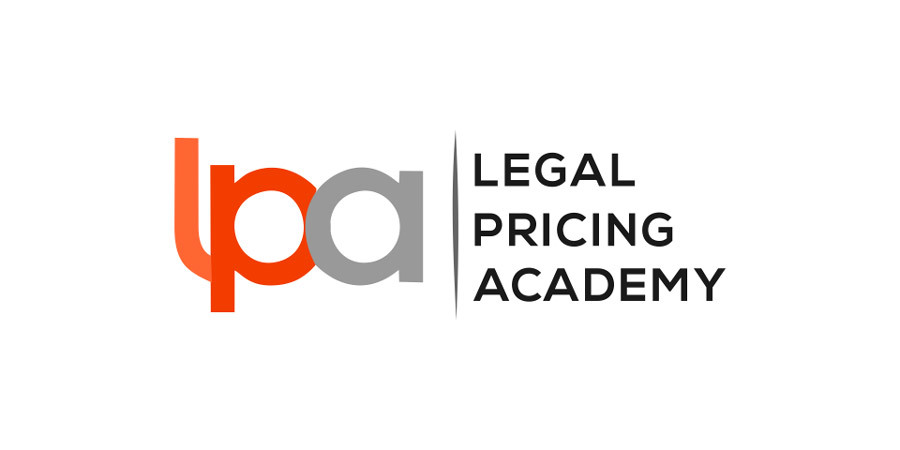The two primary objectives of all pricing decisions by law firms should be to maximise profitability while at the same time ensuring that the pricing structure leaves the client feeling that they have had fair value for money. And yet opportunities to do so continue to be squandered.
 The two primary objectives of all pricing decisions by law firms should be to maximise profitability while at the same time ensuring that the pricing structure leaves the client feeling that they have had fair value for money. And yet opportunities to do so continue to be squandered.
The two primary objectives of all pricing decisions by law firms should be to maximise profitability while at the same time ensuring that the pricing structure leaves the client feeling that they have had fair value for money. And yet opportunities to do so continue to be squandered.
There are many reasons for this but the most perplexing is the failure to apply pricing factors that have been available to lawyers in many countries for decades.
If we dig deeper, we find that this is hardly surprising since few have heard of them. Those few that have heard of them begin their explanation with, “Isn't that something to do with…?" which doesn't exactly inspire confidence that the principles are well understood, let alone systematically applied.
What is everyone else doing?
Consider for example the following:
England: Civil Procedure Rule 44.4 – Factors to be taken into account in deciding the amount of costs and The Solicitors (Non-Contentious Business) Remuneration Order 2009
United States: American Bar Association Model Rule 1.5 - Fees
Australia: New South Wales Legal Profession Act 2004 –Section 363 - Criteria for costs assessment
New Zealand: Lawyers and Conveyancers Act (Lawyers: Conduct and Client Care) Rules 2008 Chapter 9 - Reasonable fee factors
What they have in common is a clear articulation of the need to take a granular and nuanced approach to pricing legal work and not simply rely on time billing. If I were to synthesise, distil and précis the opening stanzas of each of these regulatory guidelines and the extensive multi-jurisdictional body of common law surrounding them, it would look like this:
(a) In determining what constitutes a fair and reasonable fee from the point of view of both the practitioner and the client, the practitioner shall take into account all relevant considerations including the following….
(b) The foregoing list is not exhaustive, merely illustrative.
(c) The relative importance of each of the factors will vary according to the particular circumstances of each engagement. The practitioner will need to apply a considered weighting to each of the factors.
(d) Irrespective of the methodology used to arrive at the fee, the practitioner must stand back and consider the overall reasonableness of the fee, 'in the round'
So what are these factors?
Many jurisdictions set out factors that overlap with others, some are identical, some are unique, some lists are limited to four or five items and others have up to thirteen. I have pulled together those I think are some of the most useful and which provide the greatest guidance. Necessarily, my list is longer than any single jurisdiction. In no particular order:
- the time and labour expended;
- the skill, specialised knowledge, and responsibility required to perform the services properly;
- the importance of the matter to the client;
- the results achieved;
- the urgency and circumstances in which the matter is undertaken and any time limitations imposed, including those imposed by the client;
- the degree of risk assumed by the lawyer in undertaking the services, attributable to amongst other things, the amount or value of any property or money involved;
- the complexity of the matter and the difficulty or novelty of the questions involved;
- the experience, reputation, and ability of the lawyer(s) and the firm performing the work;
- the possibility that the acceptance of the particular retainer will preclude engagement of the lawyer by other clients;
- whether the fee is fixed, conditional or contingent (whether in contentious or non-contentious work);
- any quote or estimate of fees given by the lawyer;
- any fee agreement entered into between the lawyer and client;
- the reasonable costs of running a practice;
- the fee customarily charged in the market in the locality for similar legal services;
- whether the fee was proportionately and reasonably incurred;
- whether the fee is proportionate and reasonable in amount;
- the conduct of the parties;
- the conduct of the lawyers;
- the quality of the work undertaken;
- the nature and length of the professional relationship with the client;
- the relative price risk to the practitioner and the client arising out of the detail of the pricing arrangement between them;
Pricing: Laser-Guided Missile or 'Dumb' Bomb?
My recent presentation at a law firm partner's conference was titled, 'Pricing: Laser-Guided Missile or 'Dumb' Bomb?' As should be reasonably apparent, the sort of analysis that a consideration of all the factors I have set out above requires, looks a lot more like a pricing laser-guided missile than the bland, ubiquitous, homogenous, one-size-fits-all, 'dumb bomb' that is hourly pricing; a sniper rifle versus a shotgun, if I may stretch the analogy.
Don't get me wrong, I maintain that hourly billing (“time and labour expended") has its' place and always will as part of the pricing mix. But whether one is applying standard hourly billing or far more creative alternatives, failing to closely analyse all other relevant considerations inevitably results in not only some clients being overcharged for some work, but also (and I say this advisedly), many clients will be under-charged on individual matters.
By my unscientific estimation, between 80% and 90% of all lawyers in private practice genuinely believe that “…determining what constitutes a fair and reasonable fee from the point of view of both the practitioner and the client…" consists of opening their time records and hitting the 'Print' button.
One of my favourite judicial perspectives is that of Donaldson J. in Property and Reversionary Investment Corporation Limited v. Secretary of State for the Environment [1975] 2 All ER 436 at 441 in which he made the point that the business of determining a fair and reasonable fee “…is an exercise in assessment, an exercise in balanced judgment – not an arithmetical calculation …".
Until such time as partners gain the knowledge, skills, tools and confidence to bring a sophisticated, bespoke approach to pricing, these regulatory signposts which are as relevant and helpful today as they were 40 years ago, will continue to be largely irrelevant. Such a shame.

